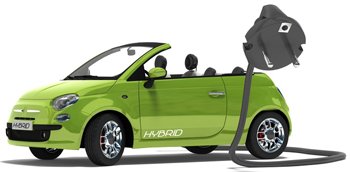Lithium Batteries

The earliest references to an alternate to the Lead Acid battery date back to 1898 when Thomas Edison who loved electric cars, embarked on researching alternate materials for the manufacture of a better battery. Edison came up with the nickel-iron battery. In 1903, his staff was testing his battery in cars, logging miles, conducting primitive abuse testing by throwing batteries out of their third-story windows of their Orange, New Jersey lab. By the following year they pushed the battery to new heights of capacity claiming them to be 233 percent better than lead acid batteries. However the batteries began to leak and did not last long - range anxiety existed even then, as it does now. Edison's health deteriorated and the gasoline engine was getting better. A lull set in. But one of Edison's employees solved the leakage problem with a rugged sealed container. In 1908, Edison's battery was rescued by two improvements. The first, being the addition of nickel flake to the electrode. The second was Lithium. In 1907, Edison filed patents for his battery. In 1909, Edison launched the second-generation cell. Edison product was success and was very popular with owners of electric truck fleets. Competition between Edison's battery and the Ironclad-Exide was intense, but with Charles Kettering inventing the automatic starter for gasoline engines, the electric car was effectively killed. Lead acid batteries being cheaper became the preferred product for use as a subordinate power source in gas powered vehicles.
The Lithium battery as we know it today was developed in 1990. With US President Obama's call to have a million electric cars on the road by 2015 and generous grants of over $1.2 billion, Lithium-Ion battery manufacturing has gained huge momentum in recent years. Once again, the electrification of mobility is a priority and the old fight to replace lead acid batteries has been reignited.
Why Lithium-Ion battery? Compared to lead acid batteries, Li-Ion batteries have higher energy density, are lighter with long life cycles and therefore a lower total cost of ownership. Unlike Nickel Hydride batteries, Li-Ion batteries do not suffer from a “memory” effect.
What is a Lithium-Ion battery?
A lithium-ion battery is a rechargeable battery in which lithium ions move from the negative electrode to the positive electrode during discharge, and back when charging.
What is the impact on Graphite demand ?
Graphite is the most commercially popular negative electrode material in Li-Ion batteries.
Rapid growth in production of Li-ion batteries is spurring global demand for graphite.
An IDC Energy report states:
“The world is in the midst of an enormous manufacturing build-out for Li-ion batteries. The 2011 manufacturing capacity of 6,689MWh will increase to 26,149MWh by 2015, thanks to massive private and public investment in the sector.
The lithium ion manufacturing build-out will reach a rough equilibrium with demand from car manufacturers, consumer electronics buyers, and electricity grid operators over the course of the next few years," says Sam Jaffe, research manager, IDC Energy Insights. "This will lead to a dramatic reduction in price for Li-ion cells to as low as $400/kWh by 2015."
The report further states: “The global manufacturers of plug-in EVs will require more than seven times their current level of production in 2011, rising to 17 GWh by 2015. North America will lead the demand in the coming year; however, Asia will quickly eclipse North America in demand. If lithium-ion costs fall as expected, global stationary storage demand on the electric grid will increase by over 17 times, to 640 MWh in 2015.”
In total, IDC Energy Insights forecasts a global growth in demand of lithium-ion batteries of 447%, from approximately 5 GWh in 2011 to 24 GWh in 2015.
This will have a significant effect on the demand for Graphite and bodes well for Graphite mining companies.
